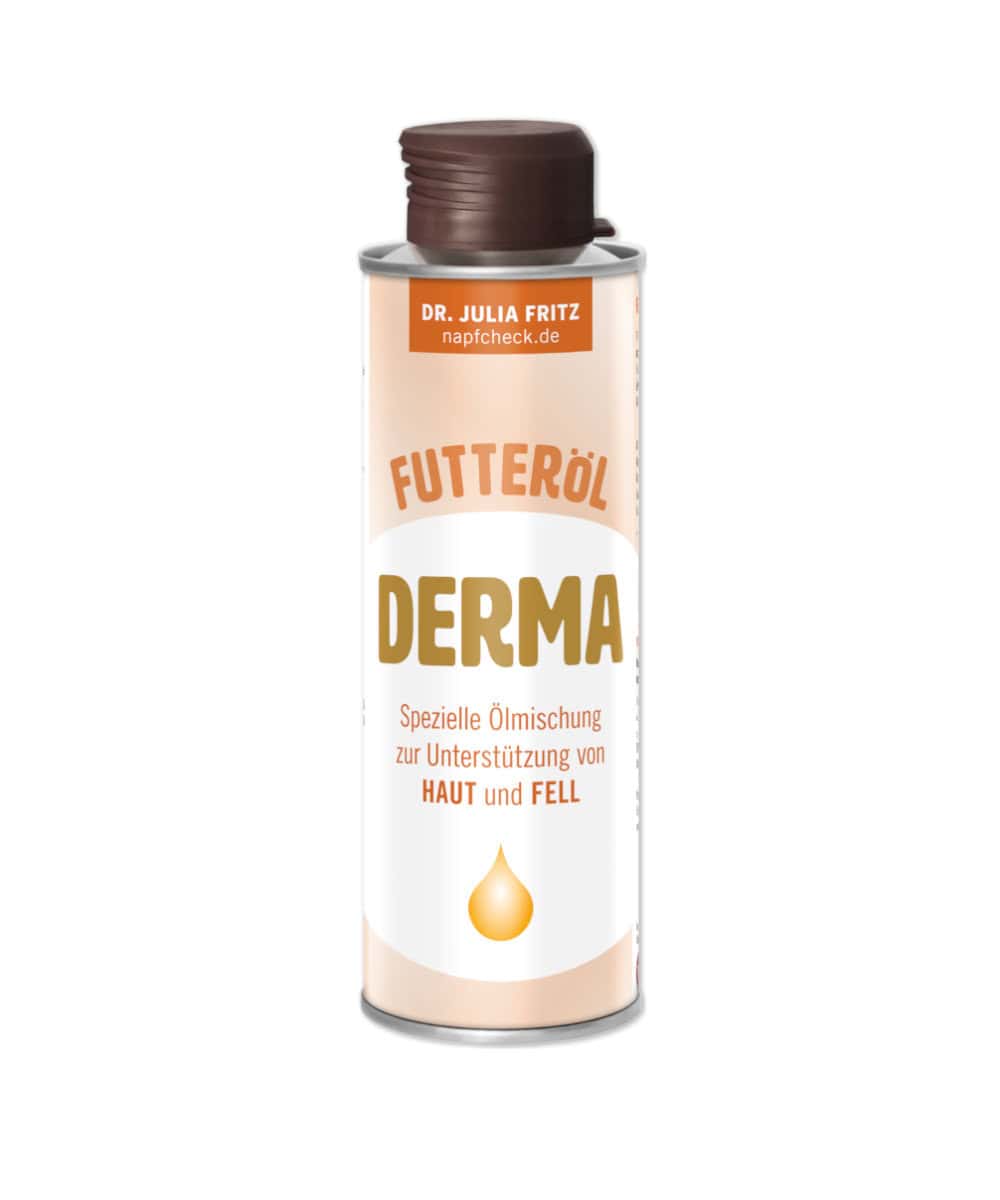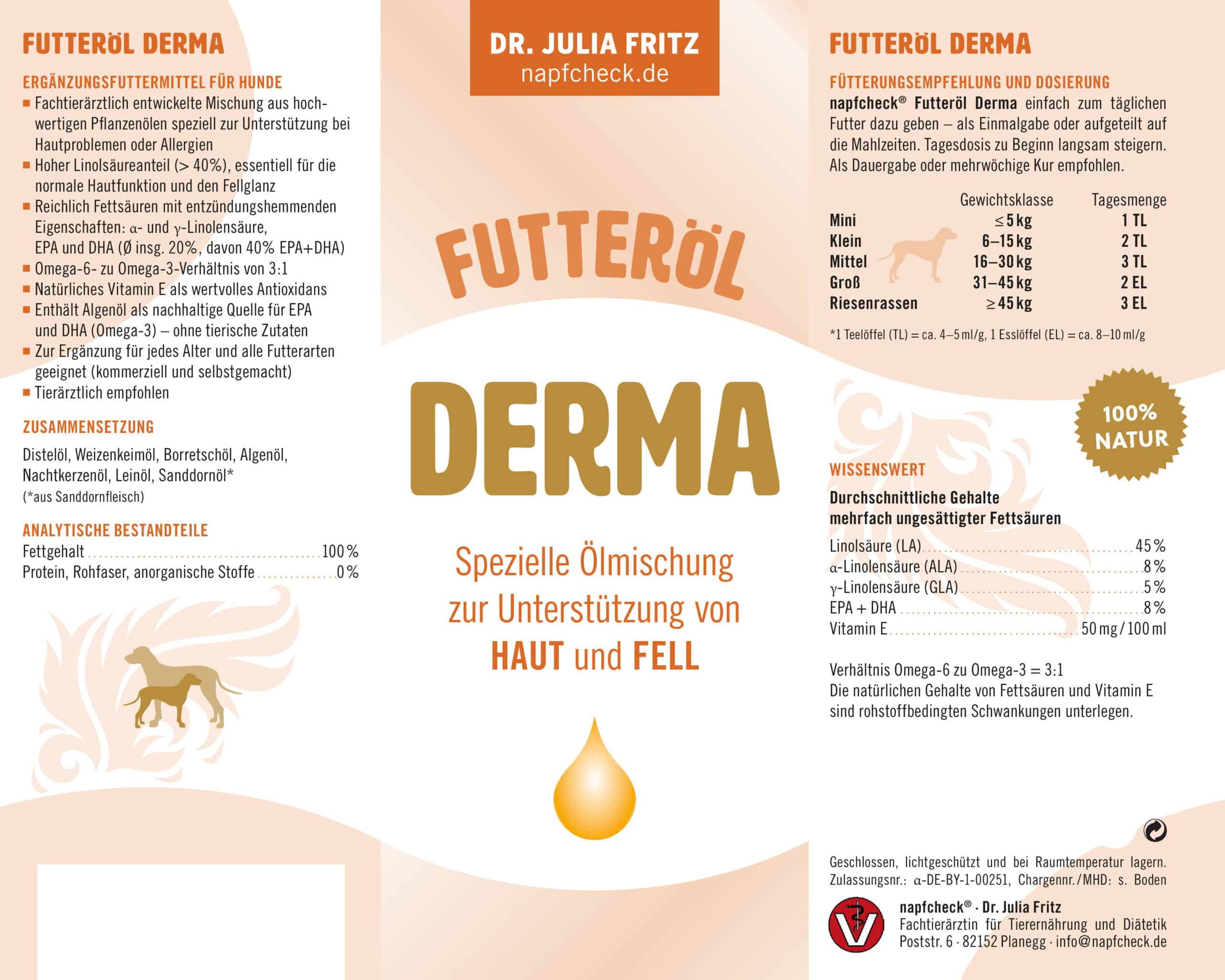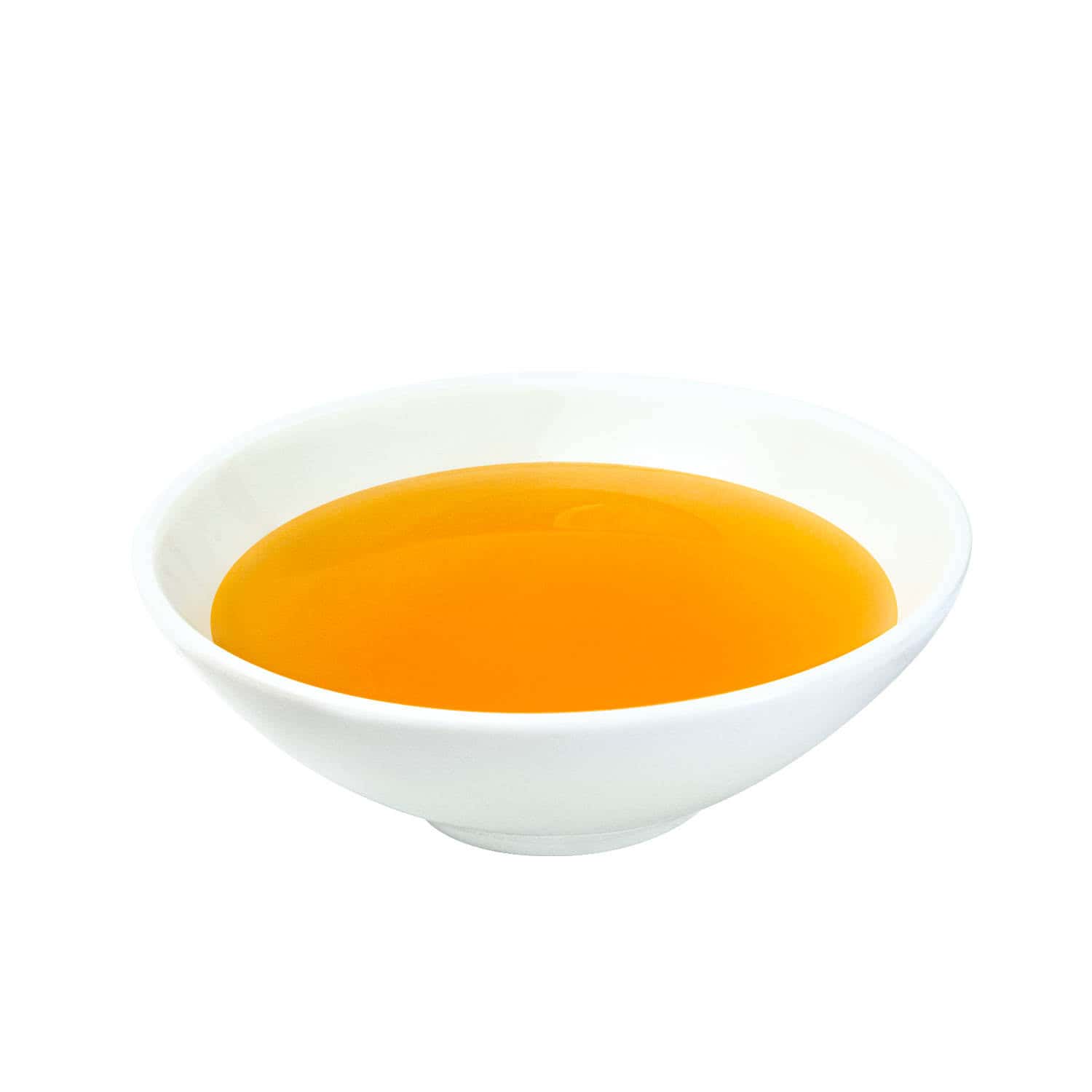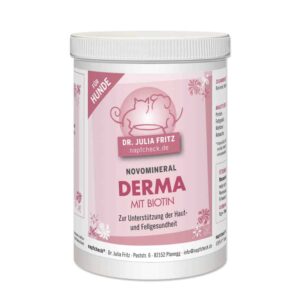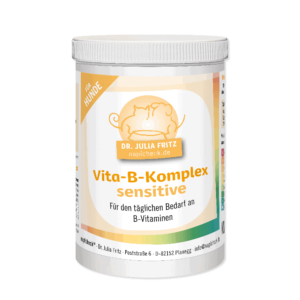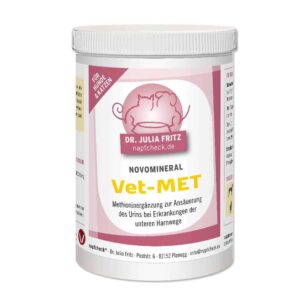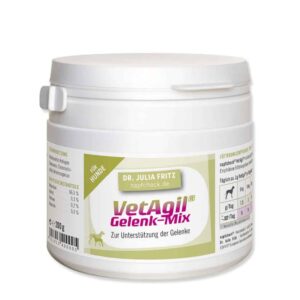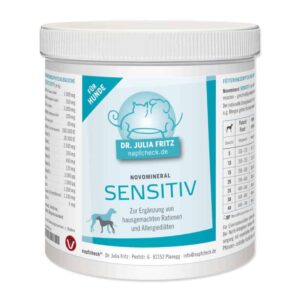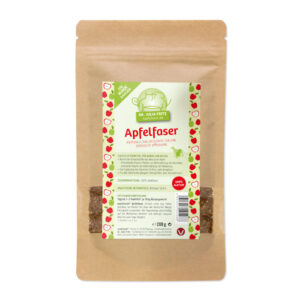napfcheck DERMA feed oil
Specialist veterinary blend of 7 high-quality plant oils specially developed to help with coat or skin problems and allergies.
- High linoleic acid content (> 40%), essential for normal skin function and coat shine
- Rich in fatty acids with anti-inflammatory properties(> 20%): alpha- and gamma-linolenic acid, EPA and DHA
- Omega-6 to omega-3 ratio of 3:1
- Natural vitamin E as a valuable antioxidant
- Contains algae oil as a sustainable source of EPA and DHA (omega-3) - without animal ingredients
- Suitable as a supplement for all ages and all types of food (commercial and homemade)
- Veterinary recommended
Our aim is to develop demand-oriented supplements that also meet other quality criteria such as compatibility and acceptance.
Complementary feed for dogs
Composition: safflower oil, wheat germ oil, borage oil, algae oil, evening primrose oil, linseed oil, sea buckthorn oil*
(*from sea buckthorn pulp)
Analytical constituents:
- Fat content: 100%
- Protein, crude fiber, inorganic substances: 0%
Feeding recommendation: simply add napfcheck Derma feed oil to the daily feed - as a single dose or divided into meals. Slowly increase the daily dose at the beginning. Suitable as a supplement for dry and wet food as well as for barf and cooked rations.
Recommended as a permanent supplement or as a cure lasting several weeks.
Recommended daily dose for dogs according to weight class:
- Mini (up to 5 kg): 1 teaspoon
- Small (6 - 15 kg): 2 teaspoons
- Medium (16 - 30 kg): 3 teaspoons
- Large (31 - 45 kg): 2 tablespoons
- Giant breeds (from 45 kg): 3 tablespoons
*1 teaspoon corresponds to approx. 4 - 5 ml or g; 1 tablespoon corresponds to approx. 8 - 10 ml or g
Storage instructions: Store closed, protected from light and at room temperature.
Average content of polyunsaturated fatty acids:
- Linoleic acid (LA) . . . . . . . . . . . . . . . . . . . . . . . . . . . . . . . . . . . . . . . 45 %
- Alpha-linolenic acid (ALA) . . . . . . . . . . . . . . . . . . . . . . . . . . . . .. . .8 %
- Gamma-linolenic acid (GLA) . . . . . . . . . . . . . . . . . . . . . . . . . . . . . .5 %
- EPA + DHA . . . . . . . . . . . . . . . . . . . . . . . . . . . . . . . . . . . . . . . . . . . .9 %
- Vitamin E . . . . . . . . . . . . . . . . . . . . . . . . . . . . . .: . . . . . 50 mg / 100 ml
Ratio of omega-6 to omega-3 = 3:1
The natural contents of fatty acids and vitamin E are subject to raw material-related fluctuations.

